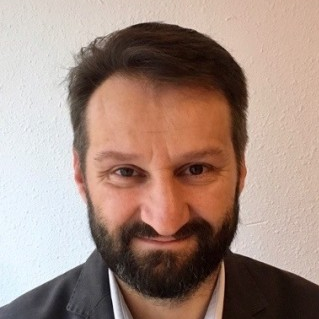Advances in Electrical Engineering Resulting from EU-Funded Horizon Europe Projects
A special issue of Electricity (ISSN 2673-4826).
Deadline for manuscript submissions: closed (30 November 2023) | Viewed by 3261
Special Issue Editors
Interests: electrical engineering; energy efficiency; power grid; renewable energy; smart grid; digital energy; artificial intelligence; electric cars charging
Special Issues, Collections and Topics in MDPI journals
Interests: grid integration of renewable energy generation; wind power; solar power; energy storage systems; HVDC transmission; microgrids; smart grids; big data for electrical systems
Special Issues, Collections and Topics in MDPI journals
Special Issue Information
Dear Colleagues,
Horizon Europe is the EU’s key funding program for research and innovation, with a budget of EUR 95.5 billion, which is tackling climate change research to achieve the UN’s Sustainable Development Goals and boost the EU’s competitiveness and growth. Electrical engineering is one of the critical fields of research and innovation for industrial leadership and energy transition in the work program proposed. Therefore, the results and insights of these projects will contribute significantly to society.
Moreover, the Horizon Europe program also establishes an open access policy to highlight the impact of publicly funded scientific research, especially upon reuse. This will contribute to more efficient science, more transparent and equal access for the benefit of all actors, and more economic growth.
This Special Issue aims to give researchers from Horizon Europe projects, but also researchers from still running H2020 projects related to electrical engineering, the opportunity to publish under open access conditions. The contributions must cover one or a combination of the following points:
- Literature reviews on relevant subjects of the projects, including the problem formulation;
- Methodologies and proposal of solutions for problems; demonstration of the solutions through simulation;
- Insights and results of demonstration activities in different environments (experimental and piloting);
- Economic and business models in relation with the solutions proposed; regulation studies and recommendations.
Prof. Dr. Andreas Sumper
Dr. Mònica Aragüés-Peñalba
Guest Editors
Manuscript Submission Information
Manuscripts should be submitted online at www.mdpi.com by registering and logging in to this website. Once you are registered, click here to go to the submission form. Manuscripts can be submitted until the deadline. All submissions that pass pre-check are peer-reviewed. Accepted papers will be published continuously in the journal (as soon as accepted) and will be listed together on the special issue website. Research articles, review articles as well as short communications are invited. For planned papers, a title and short abstract (about 100 words) can be sent to the Editorial Office for announcement on this website.
Submitted manuscripts should not have been published previously, nor be under consideration for publication elsewhere (except conference proceedings papers). All manuscripts are thoroughly refereed through a single-blind peer-review process. A guide for authors and other relevant information for submission of manuscripts is available on the Instructions for Authors page. Electricity is an international peer-reviewed open access quarterly journal published by MDPI.
Please visit the Instructions for Authors page before submitting a manuscript. The Article Processing Charge (APC) for publication in this open access journal is 1000 CHF (Swiss Francs). Submitted papers should be well formatted and use good English. Authors may use MDPI's English editing service prior to publication or during author revisions.
Keywords
- electrical engineering
- innovation and research projects
- demonstration and experimental results
- economic and business aspects






